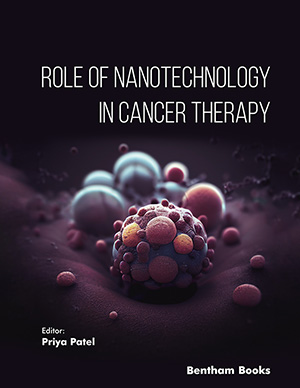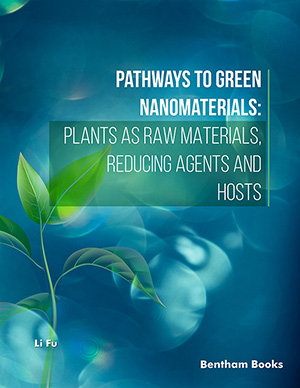Abstract
The use of heparin or low molecular weight heparin (LMWH) is calling attention as an alternative for treating of skin ulcers. However, clinical topical application heparin has challenges such as stability, permeation and number of administrations. Thus, the encapsulation of heparin in nanoparticles may enable the clinical application of this molecule for the treatment of lesions. Therefore, the goal of this study was evaluated the use of free and encapsulated LMWH in mucoadhesive nanoparticles on acute skin lesions in an in vivo rat model. The polymeric nanoparticles was prepared using poly(ε-caprolactone) and chitosan in order to obtain a particle with mucoadhesive properties. Spherical nanoparticles with an average diameter of 511 nm and with positive superficial charge (+ 20 mV) were produced. In vivo experiments with free or encapsulated enoxaparin showed no beneficial effect upon the size of the skin lesions in comparison to controls. Furthermore, no renal, hepatic or hematological toxicity was detected in all groups analyzed. In conclusion, mucoadhesive particles with high encapsulation efficiency (98%) were produced, however with no favorable effect for the treatment of acute skin wounds.
Keywords: Biodegradable polymers, chitosan, low molecular weight heparin, polymeric nanoparticles, skin wounds, wound healing.
Current Nanoscience
Title:Preparation and Application of Mucoadhesive Nanoparticles Containing Enoxaparin in a Wound Healing Animal Model
Volume: 10 Issue: 6
Author(s): Stephany Cares Huber, Priscyla Daniely Marcato, Nelson Duran, Andrea Monte Alto Costa and Joyce Maria Annichino-Bizzacchi
Affiliation:
Keywords: Biodegradable polymers, chitosan, low molecular weight heparin, polymeric nanoparticles, skin wounds, wound healing.
Abstract: The use of heparin or low molecular weight heparin (LMWH) is calling attention as an alternative for treating of skin ulcers. However, clinical topical application heparin has challenges such as stability, permeation and number of administrations. Thus, the encapsulation of heparin in nanoparticles may enable the clinical application of this molecule for the treatment of lesions. Therefore, the goal of this study was evaluated the use of free and encapsulated LMWH in mucoadhesive nanoparticles on acute skin lesions in an in vivo rat model. The polymeric nanoparticles was prepared using poly(ε-caprolactone) and chitosan in order to obtain a particle with mucoadhesive properties. Spherical nanoparticles with an average diameter of 511 nm and with positive superficial charge (+ 20 mV) were produced. In vivo experiments with free or encapsulated enoxaparin showed no beneficial effect upon the size of the skin lesions in comparison to controls. Furthermore, no renal, hepatic or hematological toxicity was detected in all groups analyzed. In conclusion, mucoadhesive particles with high encapsulation efficiency (98%) were produced, however with no favorable effect for the treatment of acute skin wounds.
Export Options
About this article
Cite this article as:
Huber Cares Stephany, Marcato Daniely Priscyla, Duran Nelson, Costa Monte Alto Andrea and Annichino-Bizzacchi Maria Joyce, Preparation and Application of Mucoadhesive Nanoparticles Containing Enoxaparin in a Wound Healing Animal Model, Current Nanoscience 2014; 10 (6) . https://dx.doi.org/10.2174/1573413710666140812230749
| DOI https://dx.doi.org/10.2174/1573413710666140812230749 |
Print ISSN 1573-4137 |
| Publisher Name Bentham Science Publisher |
Online ISSN 1875-6786 |
Call for Papers in Thematic Issues
Role of nanomaterials in fabrication of coatings, Machining and Joining
The application of nanoscience has brought about a revolution in the field of mechanical engineering by providing novel materials, boosting manufacturing processes, and generating cutting-edge products. The purpose of this special issue is to investigate the enormous impact that nanoscience has had on mechanical engineering, with a particular emphasis on ...read more
Advanced Inorganic Nanocomposites and Their Emerging Applications
This special issue collection will highlight developments on the recent trends about the synthesis of metal oxides, nanoclusters, biomaterials, 2D nanomaterials, nanocrystals, nanocomposites, etc. and their applications in electrochemical systems, tissue regeneration, energy storage and harvesting, sensors, etc. The novelty of the methods in the chemical synthesis and their characterizations, ...read more
Applicability of Nanotechnology for Performance Enhancement of Clean Energy Technologies
Population growth, industrialization, and improvement in living quality would lead to further increase in energy demand in near future. Regarding the disadvantages of fossil fuels such as fluctuations in their price, high emissions of greenhouse gases and restriction of their sources, it is crucial to use and exploit alternative energy ...read more
Graphene and 2D Materials for Energy Storage and Conversion
This thematic issue will discuss the recent advances in graphene-based nanomaterials for different energy technologies. Graphene possesses a high surface area, and stable structure and exhibits many interesting electronic, optical, and mechanical properties due to its 2D crystal structure. Graphene is of both fundamental interest and suitable for a wide ...read more
Related Journals
 23
23
- Author Guidelines
- Graphical Abstracts
- Fabricating and Stating False Information
- Research Misconduct
- Post Publication Discussions and Corrections
- Publishing Ethics and Rectitude
- Increase Visibility of Your Article
- Archiving Policies
- Peer Review Workflow
- Order Your Article Before Print
- Promote Your Article
- Manuscript Transfer Facility
- Editorial Policies
- Allegations from Whistleblowers
Related Articles
-
Hierarchical Profiles of Signaling Pathways and Networks Reveal Two Complementary Pharmacological Mechanisms
CNS & Neurological Disorders - Drug Targets Pexelizumab and its Role in the Treatment of Myocardial Infarction and in Coronary Artery Bypass Graft Surgery: A Review
Recent Patents on Cardiovascular Drug Discovery Antithrombotic Therapy in Cardiac Embolism
Current Cardiology Reviews Endothelial Dysfunction and Atherosclerosis: Focus on Novel Therapeutic Approaches
Recent Patents on Cardiovascular Drug Discovery Targeting Cardiomyocyte Ca<sup>2+</sup> Homeostasis in Heart Failure
Current Pharmaceutical Design Invasive and Noninvasive Assessment of Exercise-induced Ischemic Diastolic Response Using Pressure Transducers
Current Cardiology Reviews Vasopressin Secretion Control: Central Neural Pathways, Neurotransmitters and Effects of Drugs
Current Pharmaceutical Design The Involvement of PPARs in the Causes, Consequences and Mechanisms for Correction of Cardiac Lipotoxicity and Oxidative Stress
Current Molecular Pharmacology Hematopoietic Colony Stimulating Factors in Cardiovascular and Pulmonary Remodeling: Promoters or Inhibitors?
Current Pharmaceutical Design Role of Chemokines and Their Receptors in Cancer
Current Pharmaceutical Design Acute Passivation of Vulnerable Plaques with Wild-Type Apolipoprotein A-I in ApoE-Deficient Mice
Vascular Disease Prevention (Discontinued) The Role of IRE1 Signaling in the Central Nervous System Diseases
Current Neuropharmacology Susceptibility of Periodontopathogenic and Cariogenic Bacteria to Defensins and Potential Therapeutic Use of Defensins in Oral Diseases
Current Pharmaceutical Design Cerebrovascular Complications of Diabetes: Focus on Stroke
Endocrine, Metabolic & Immune Disorders - Drug Targets Microglia NLRP3 Inflammasomes Activation Involving Diabetic Neuroinflammation in Diabetic Mice and BV2 Cells
Current Pharmaceutical Design Treatment of Diabetic Foot Ulcer: An Overview Strategies for Clinical Approach
Current Diabetes Reviews Blood Coagulation as an Intrinsic Pathway for Proinflammation: A Mini Review
Inflammation & Allergy - Drug Targets (Discontinued) Pharmacological Targeting of Neuronal Kv7.2/3 Channels: A Focus on Chemotypes and Receptor Sites
Current Medicinal Chemistry Neuroimmune Crosstalk in CNS Disorders: The Histamine Connection
Current Pharmaceutical Design The Molecular Basis of Class Side Effects Due to Treatment with Inhibitors of the VEGF/VEGFR Pathway
Current Clinical Pharmacology























